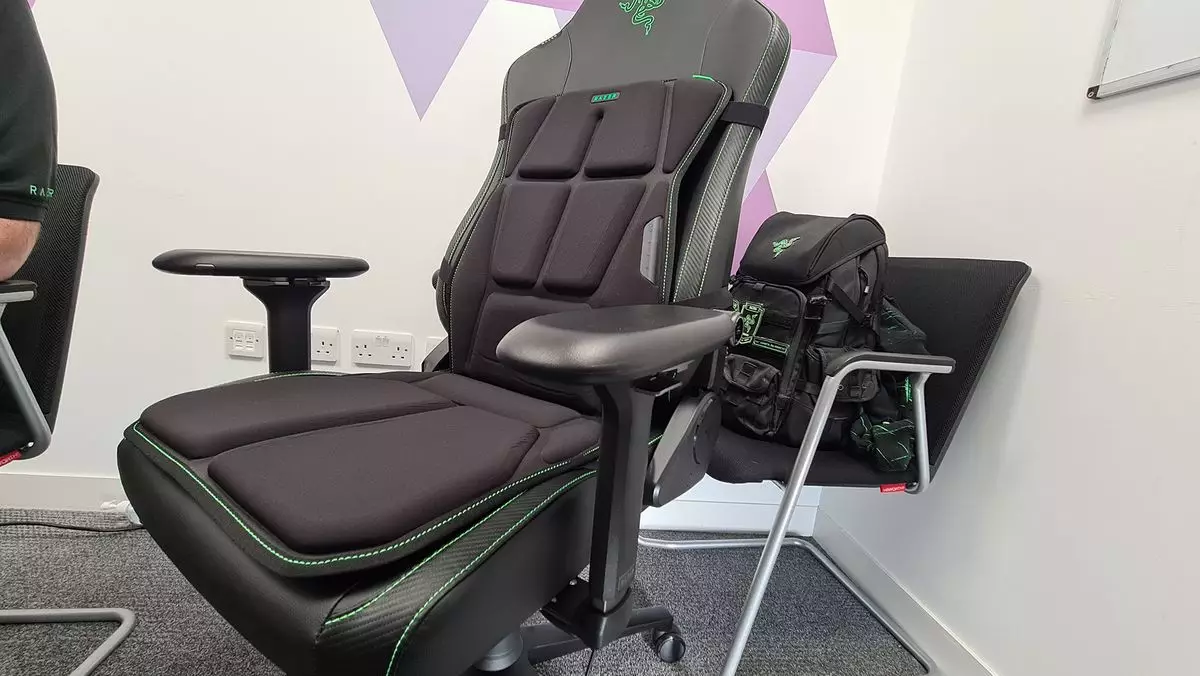In the competitive landscape of gaming peripherals, Razer has made a bold assertion with its new haptic gaming cushion, the Razer Freya. Deceptively simple in its design, this cushion aims to enhance gameplay by providing tactile feedback in response to in-game actions. As gamers seek deeper immersion, Razer’s proposition raises fundamental questions: Is this cushion genuinely transformative, or is it merely another accessory that promises more than it can deliver?
At its core, the Freya features six padded regions, each outfitted with motors designed to generate vibrations based on real-time game events. As a concept, haptic feedback has been around for years, transcending various forms of gaming accessories, from vests to chairs. However, the introduction of a cushion by Razer is noteworthy, as it targets a broad audience and integrates well with existing gaming chair setups.
Initially intrigued, I connected the Freya to a Razer gaming chair and prepared to delve into the experience. With the Razer Synapse 4 app, I could manipulate the vibration intensity, tailoring it to my preferences. When activating the cushion during a gaming session, I anticipated a wave of immersive feedback that would draw me deeper into the game environment.
Selecting Final Fantasy XVI to test the device proved to be a calculated choice, given its native support for the haptic cushion. As I engaged in battles and performed various actions, the corresponding vibrations did indeed stimulate my senses. For instance, swinging swords triggered responses in distinct areas of the cushion, contributing to an interactive experience that felt novel initially.
However, as I continued to play, the intricacies of the feedback began to fade into the background. What started as a fascinating interaction soon became a background hum of vibrations. Perhaps my evolving familiarity with the mechanics dulled the initial novelty, or maybe the cushion’s bounty of haptic feedback lacked the compelling engagement that keeps users captivated.
Furthermore, for those who may not find specific game support, the cushion can be adjusted to respond to general in-game audio. This versatility seems promising, yet it raises a challenge: will it truly satisfy those seeking dedicated haptic experiences, or is it undermined by its own limitations?
Exploring Additional Applications: Sim Racing and Beyond
As an enthusiast of sim racing, I found myself pondering the potential applications of the Razer Freya outside of traditional gaming. The idea of incorporating this cushion into a dedicated sim racing setup was undeniably appealing. With the right adjustments, it could enhance the immersion by providing feedback that aligns with the dynamics of racing.
However, while the cushion holds promise in this realm, can it compete with established, high-end motion rigs that offer comprehensive feedback systems? Undoubtedly, Razer’s Freya is far from being a full-motion solution; its basic design may feel insufficient when juxtaposed with the immersive experiences that a dedicated rig can deliver.
Despite being less than convinced about its applications beyond sim racing, I acknowledge the Freya’s potential, albeit limited, in providing some level of enhancement. The responsibility to deliver broader compatibility lies with game developers, who must embrace and cultivate support for the cushion across various titles.
As the testing session concluded, my excitement gave way to skepticism. Asking whether the Razer Freya justifies its approximately $300 price tag left me contemplating its value proposition. Despite the captivating technology behind haptic feedback, did my experience warrant such an investment?
While some may revel in the novelty or seek immersive gaming sessions unparalleled by standard setups, I was left questioning whether the cushion’s enhancements could sustain long-term interest. It felt reminiscent of being too close to a speaker at a concert—exciting at times, yet overwhelming and not particularly enjoyable.
With competing products and options on the market, those interested in gaming-enhancing peripherals may want to consider all angles before committing to the Freya. As gaming continues to evolve, it seems clear that the journey for innovative enhancements is ongoing, and the Razer Freya may merely be one step along that path rather than a destination in itself.


Leave a Reply